 W
WValmet 361 D was the third diesel tractor built by Valmet.
 W
WMV Captain Kurbatskiy was a Russian SA-15 type cargo ship originally known as Nizhneyansk (Нижнеянск) after a port of the same name. The ship was delivered from Valmet Vuosaari shipyard in 1983 as the second ship of a series of 19 icebreaking multipurpose arctic freighters built by Valmet and Wärtsilä, another Finnish shipbuilder, for the Soviet Union for year-round service in the Northern Sea Route. These ships, designed to be capable of independent operation in arctic ice conditions, were of extremely robust design and had strengthened hulls resembling those of polar icebreakers.
 W
WThe Dm6 and Dm7 were diesel multiple units built by Valmet in the 1950s and 1960s for Valtionrautatiet. They are known by their nickname lättähattu.
 W
WVR Class Dr12 was a heavy diesel locomotive of Valtionrautatiet. The first 6 locomotives were ordered in 1956. They entered service between 1959 and 1963. The locomotives were built by 2 manufacturers, Valmet and Lokomo, both based in Tampere. All Hr12 class locomotives with even numbers were produced by Valmet, while all odd numbers were produced by Lokomo. The locomotives were withdrawn in the early 1990s.
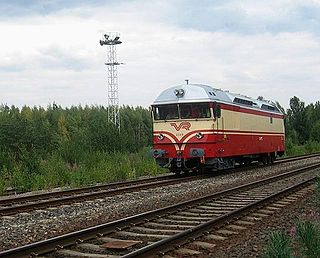 W
WVR Class Dr13 was a heavy diesel locomotive used by VR Group. The Dr13 was designed by the French company Alstom. The class consisted of 54 locomotives, of which the first two were built by Alstom’s factory in Belfort, France and were shipped to Finland in 1962, while the rest were built in Tampere at the factories of Lokomo and Valmet. The first Dr13 series locomotive came to Finland on 24 October 1962. The Dr13 series was introduced between 1962–1963, and the last units were withdrawn by June 2000.
 W
WThe Dr16 is a class of diesel-electric locomotives used by VR. The 23 locomotives have a single, off-centre cab and are currently VR's most powerful diesel locomotives. Their nickname is "Iso Vaalee". They are presently mainly used on heavy freight services in northern Finland; their main passenger duty is the haulage of trains on the non-electrified line between Kemi and Kolari in Lapland. Dr16 locomotives were also used extensively on the line between Oulu and Rovaniemi, prior to the completion of the electrification of the line in 2004.
 W
WThe Dv12 is the standard Finnish medium-weight diesel-hydraulic road switcher operated by VR. As all the main lines of Finnish railway network have been electrificied, the locomotive is designated mostly to unelectrified, less frequently used side lines. Occasionally it may still pull cargo trains on main lines. It has also been put in service as a shunter, replacing older classes Dv15 and Dv16 as they were retired. A total of 192 locomotives were built by Lokomo and Valmet between the years 1963 and 1984. As of 2019, the oldest Dv12 units are 56 years old.
 W
WTorolf Eklund was a Finnish aircraft designer, who worked at the Valtion lentokonetehdas between 1935 and 1962. He privately designed and built his own small single-seat flying boat, the Eklund TE-1, in the late 1940s.
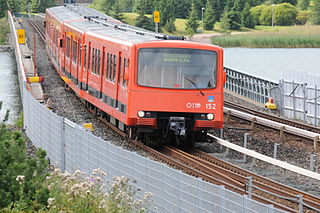 W
WThe HKL Class M100 is the first and oldest class of metro trains in use on the Helsinki Metro. One train consists of two individually numbered cars. A total of 42 car pairs were manufactured between 1977 and 1984.
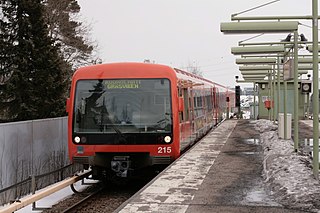 W
WThe HKL Class M200 is a class of metro trains in use on the Helsinki Metro, based on the DBAG Class 481 trains used on the Berlin S-Bahn. One train consists of two individually numbered cars. A total of 12 pairs were manufactured by Bombardier-DWA in Germany during 2000–2001.
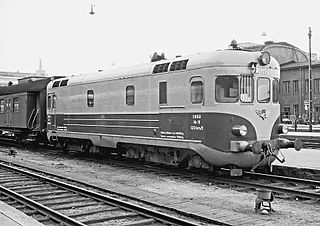 W
WThe VR Class Hr11 was the first class of line-haul diesel locomotives used by Valtionrautatiet. Only five units were built, all delivered by Valmet in 1955. The Maybach diesel engines used in the locomotives proved highly unreliable, resulting in a complete overhaul of the engine-transmission system in 1956–58, but this did not solve all of the reliability problems. The Hr11 series was withdrawn from service in 1972.
 W
WKeihässalmi was a minelayer of the Finnish Navy. She was commissioned in 1957 and remained in service until 1994, after which she was turned into a museum ship in Turku. The vessel was named after the strait of Keihässalmi, which is located in Sipoo. Keihässalmi was the first Finnish minelayer to be constructed after World War II.
 W
WThe KK 62, officially 7.62 KK 62 and colloquially KVKK or KVKK 62, is a Finnish 7.62×39mm light machine gun designed in late 1950s with the first prototype ready for testing in 1960. It was officially adopted as the standard infantry support weapon of the Finnish Defence Forces (FDF) in 1962 as the 7.62 konekivääri 62; the first weapons were delivered in 1966. It remains in service, although a replacement has already entered use, namely the PKM general-purpose machine gun.
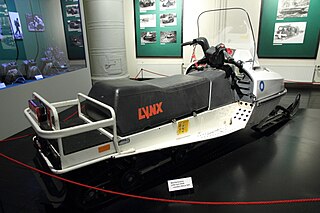 W
WLynx (BRP), is a Finnish snowmobile brand in Finland, manufactured and distributed by Bombardier Recreational Products, which has made many unique inventions in snowmobile technology. Lynx is a part of a Canadian company BRP. The newest Lynx snowmobiles are built on Ski-Doo platform with minor differences, but they use a different rear suspension called PPS made for rougher conditions than a traditional Ski-Doo suspension system, which is not as tough or heavy as the PPS system.
 W
WOlavi Johannes Mattila was a Finnish politician who served twice as the Finnish Minister for Foreign Affairs, and also held several other ministerial positions in a number of cabinets in the 1960s and 1970s. He was also the CEO of state owned Valmet. He was considered as a close associate of Urho Kekkonen.
 W
WNr I is a class of articulated six-axle, chopper-driven tram operated by Helsinki City Transport on the Helsinki tram network. All trams of this type were built by the Finnish metal industry corporation Valmet between the years 1973 and 1975.
 W
WNr II is a class of articulated six-axle, chopper-driven tram operated by Helsinki City Transport (HKL) on the Helsinki tram network. All trams of this type were built by the Finnish metal industry corporation Valmet between the years 1983 and 1987.
 W
WThe RK 62, officially 7.62 RK 62 and commercially M62, is an assault rifle manufactured by Valmet and Sako. It is the standard issue infantry weapon of the Finnish Defence Forces.
 W
WThe RK 71, commercially M71, is a Finnish assault rifle designed and manufactured by Valmet. It is based on the RK 62, which in turn is based on the Soviet AK-47. Finnish Defence Forces tested the 7.62 RK 71 between 1971 and 1973 as a possible replacement of the RK 62, but logistics issues prevented its larger adoption by FDF. The rifle was also exported to Qatar.
 W
WRM 2 was a class of two-bogie four-axle tram operated by Turku City Transport, popularly known as "ghost cars". They were the last trams acquired for the Turku tram network prior to its closure in 1972, built by the Finnish metal industry corporation Valmet in 1956. Although never operated as such, these trams were designed for use on light rail lines.
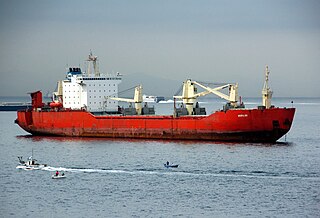 W
WSA-15 is the project name for a series of icebreaking multipurpose cargo ships built in Finland for the Soviet Union in the 1980s. The ships, capable of independent operation in all prevailing arctic ice conditions, were the first merchant vessels designed for year-round operations in the Northern Sea Route. For this purpose they have hulls that resemble those of polar icebreakers and propulsion systems capable of withstanding ice loads.
 W
WMS Sea Diamond was a cruise ship operated by Louis Hellenic Cruise Lines. She was built in 1984 by Valmet, Finland for Birka Line as Birka Princess. The ship sank on 5 April 2007, after running aground near the Greek island of Santorini the previous day, leaving two passengers missing and presumed dead.
 W
WThe electric multiple unit Sm1 is a class of commuter train equipment that was in active use by VR from 1969–2016. Fifty Sm1 units were built between 1968 and 1973 at Valmet airplane factory in Tampere. They were put into use on the first electrified Finnish railway line between Helsinki and Kirkkonummi on January 26, 1969 with five units in operation. All Sm1's were thoroughly renovated between 1994 and 2000. Commercial service ended in April 2016.
 W
WThe Sm2 is a class of electric multiple units in use by VR in commuter traffic in the Helsinki area. Fifty Sm2 units were built between 1975 and 1981 by Valmet in Tampere.
 W
WMV Tibor Szamueli was a Soviet and later Russian barge carrier. Derivatives of the Seabee system, she and her sister ship, MV Yulius Fuchik, were built in the late 1970s by the Finnish state-owned shipbuilder Valmet in Vuosaari shipyard. As the demand for lighter transport fell in the 1990s, she was sold and eventually broken up.
 W
WValmet Automotive is a Finnish contract manufacturer and service provider for the automotive industry. The company offers services in vehicle manufacturing and produces battery packs and modules, convertible roof systems and kinematic solutions.
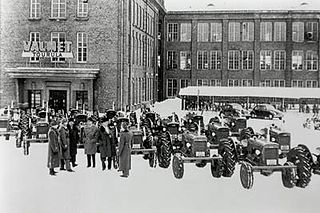 W
WValmet was formed in 1951, when the country of Finland decided to group their various factories working on war reparations to the Soviet Union under one company, Valmet. The factories within the group produce a wide array of products including aeroplanes, road vehicles, locomotives, weapons manufacturing and everyday household appliances. Numerous parts of the company have since been sold or merged with other companies specializing in their own fields of trade and manufacture. Valmet itself was a brand of Metso Corporation, but was spun off to a separate company in December 2013. Tractors have been produced by Valmet, both in Brazil and Finland. The brand name now in use is Valtra. The tractor business, though still located in Finland, is owned by AGCO.
 W
WValtion lentokonetehdas was a Finnish aircraft manufacturing company that was founded on 23 February 1928 from the IVL or I.V.L. factory, founded in 1921.
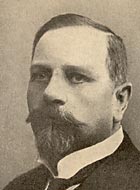 W
WGustaf Woldemar Wrede af Elimä was a Finnish Freiherr, engineer and businessman. He is best known for his contribution to Finnish tractor production.